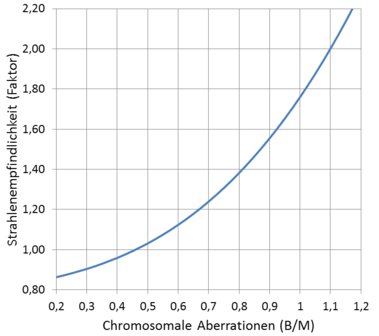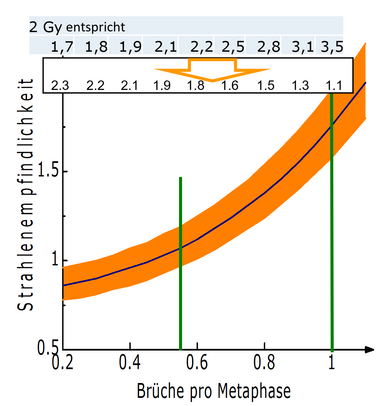
the more sensitive the patient is to radiation; this is particularly true for very high radiation sensitivity values.

Example: For a patient with a significantly increased radiation sensitivity of 0.6 B/M who receives a daily dose of 2Gy
this dose corresponds to a daily dose of 2.2Gy for the patient. Based on this, this daily dose could be reduced to
1.8Gy so that the effect of the originally planned dose of 2Gy is maintained.
Reduced daily radiation dose with greatly increased individual radiation sensitivity
If patients are found to have increased individual radiation sensitivity, this is not a contraindication to radiotherapy. Instead, the indication for radiotherapy should be carefully reconsidered and, if necessary, the daily and total radiation dose of the planned radiotherapy should be adjusted according to the radiation sensitivity. This adjustment of the fractional dose for patients with increased radiosensitivity can be done according to a scheme based on what has already been learned about radiotherapy in radiosensitive patients. In principle, no reduction in the efficacy of radiotherapy is to be expected, as the tumour in these patients has the same increased sensitivity to radiation as normal tissue. In the case of genetic alterations, which are usually due to germline mutations, all cells in the body are affected by these mutations, which means that the tumour is also more sensitive to radiation in the same way as normal tissue. If the increased sensitivity to radiation is caused by autoimmune diseases, it is not so easy to prove, as the cause of the increased sensitivity to radiation is not known. However, experience has shown that both normal and tumour tissue are more sensitive to radiation. Experience has shown that a lower dose of radiation is sufficient to control a tumour than is the case for those who are not sensitive to radiation.
tumour.
